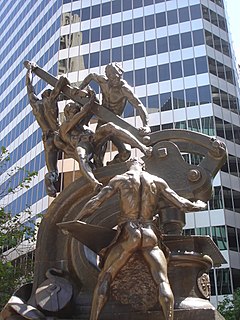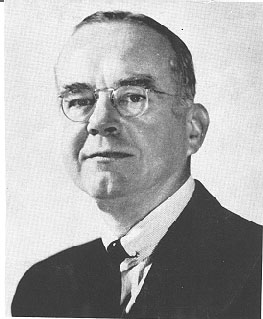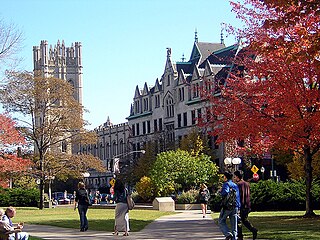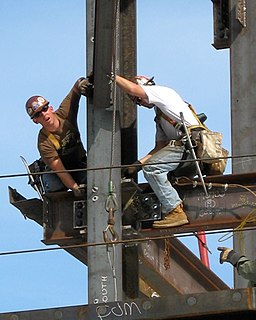
Barbara Ehrenreich is an American author and political activist who describes herself as "a myth buster by trade" and has been called "a veteran muckraker" by The New Yorker. During the 1980s and early 1990s she was a prominent figure in the Democratic Socialists of America. She is a widely read and award-winning columnist and essayist, and author of 21 books. Ehrenreich is perhaps best known for her 2001 book Nickel and Dimed: On (Not) Getting By in America. A memoir of Ehrenreich's three-month experiment surviving on minimum wage as a waitress, hotel maid, house cleaner, nursing-home aide, and Wal-Mart clerk, it was described by Newsweek magazine as "jarring" and "full of riveting grit," and by The New Yorker as an "exposé" putting "human flesh on the bones of such abstractions as 'living wage' and 'affordable housing'." She is a recipient of a Lannan Literary Award.

Social class in the United States refers to the idea of grouping Americans by some measure of social status, typically economic, however it could also refer to social status or location. The idea that American society can be divided into social classes is disputed, and there are many competing class systems.
The middle class is a class of people in the middle of a social hierarchy. Its usage has often been vague whether defined in terms of occupation, income, education or social status. The definition by any author is often chosen for political connotations. Writers on the left favor the lower-status "working class". Modern social theorists—and especially economists—have defined and re-defined the term "middle class" in order to serve their particular social or political ends.

A professional is a member of a profession or any person who earns their living from a specified professional activity. The term also describes the standards of education and training that prepare members of the profession with the particular knowledge and skills necessary to perform their specific role within that profession. In addition, most professionals are subject to strict codes of conduct, enshrining rigorous ethical and moral obligations. Professional standards of practice and ethics for a particular field are typically agreed upon and maintained through widely recognized professional associations, such as the IEEE. Some definitions of "professional" limit this term to those professions that serve some important aspect of public interest and the general good of society.

James Burnham was an American philosopher and political theorist. He chaired the philosophy department at New York University; His first book was An Introduction to Philosophical Analysis (1931). Burnham became a prominent Trotskyist activist in the 1930s. He rejected Marxism and became an even more influential theorist of the right as a leader of the American conservative movement. His book The Managerial Revolution, published in 1941, speculated on the future of capitalism. Burnham was an editor and a regular contributor to William F. Buckley's conservative magazine National Review on a variety of topics. He rejected containment of the Soviet Union and called for the rollback of communism worldwide.

In sociology, the upper middle class is the social group constituted by higher status members of the middle class. This is in contrast to the term lower middle class, which is used for the group at the opposite end of the middle-class stratum, and to the broader term middle class. There is considerable debate as to how the upper middle class might be defined. According to sociologist Max Weber, the upper middle class consists of well-educated professionals with postgraduate degrees and comfortable incomes.
Working-class culture is a range of cultures created by or popular among working-class people. The cultures can be contrasted with high culture and folk culture, and are sometimes equated with popular culture and low culture. Working-class culture developed during the Industrial Revolution. Because most of the newly created working-class were former peasants, the cultures took on much of the localised folk culture. This was soon altered by the changed conditions of social relationships and the increased mobility of the workforce and later by the marketing of mass-produced cultural artefacts such as prints and ornaments and commercial entertainment such as music hall and cinema.
The American middle class is a social class in the United States. While the concept is typically ambiguous in popular opinion and common language use, contemporary social scientists have put forward several ostensibly congruent theories on the American middle class. Depending on the class model used, the middle class constitutes anywhere from 25% to 66% of households.

The educational attainment of the U.S. population refers to the highest level of education completed. The educational attainment of the U.S. population is similar to that of many other industrialized countries with the vast majority of the population having completed secondary education and a rising number of college graduates that outnumber high school dropouts. As a whole, the population of the United States is spending more years in formal educational programs. As with income, levels differ by race, age, household configuration, and geography.

In the United States there has long been a conflict between the working class majority and the professional class. The conflict goes back to the workers revolution and age of unionized labor in the late nineteenth century. Since the 1870s and the rise of professionalism, the daily routine of American workers has been largely designed by professionals instead of foremen.
The African-American middle class consists of Black Americans who have middle-class status within the American class structure. It is a societal level within the African-American community that primarily began to develop in the early 1960s, when the ongoing Civil Rights Movement led to the outlawing of de jure racial segregation.
The terms average Joe, ordinary Joe, Joe Sixpack, Joe Lunchbucket, Joe Snuffy, Joe Schmo and ordinary Jane, average Jane, and plain Jane, are used primarily in North America to refer to a completely average person, typically an average American. It can be used both to give the image of a hypothetical "completely average person" or to describe an existing person. Parallel terms in other languages for local equivalents exist worldwide.
In sociology, the upper middle class of the United States is the social group constituted by higher-status members of the middle class. This is in contrast to the term lower middle class, which refers to the group at the opposite end of the middle class scale. There is considerable debate as to how the upper middle class might be defined. According to Max Weber, the upper middle class consists of well-educated professionals with graduate degrees and comfortable incomes.

The society of the United States is based on Western culture, and has been developing since long before the United States became a country with its own unique social and cultural characteristics such as dialect, music, arts, social habits, cuisine, and folklore. Today, the United States of America is an ethnically and racially diverse country as a result of large-scale immigration from many different countries throughout its history.
In the United States, the concept of a working class remains vaguely defined, and classifying people or jobs into this class can be contentious. Economists and pollsters in the United States generally define "working class" adults as those lacking a college degree, rather than by occupation or income. Many members of the working class, as defined by academic models, are often identified in the vernacular as being middle-class, there is considerable ambiguity over the term's meaning. According to Frank Newport, "for some, working class is a more literal label; namely, an indication that one is working." Sociologists such as Dennis Gilbert and Joseph Kahl see the working class as the most populous in the United States, while other sociologists such as William Thompson, Joseph Hickey and James Henslin deem the lower middle class slightly more populous. In the class models devised by these sociologists, the working class comprises between 30% and 35% of the population, roughly the same percentages as the lower middle class. According to the class model by Dennis Gilbert, the working class comprises those between the 25th and 55th percentile of society. In 2018, 31% of Americans self described themselves as working class. Retired American adults are less likely to describe themselves as "working class", regardless of the actual income or education level of the adult. Those in the working class are commonly employed in clerical, retail sales, and low-skill manual labor occupations. Low-level white-collar workers are included in this class.

Proletarian poetry is a political poetry movement that developed in the United States during the 1920s and 1930s that expresses the class-conscious perspectives of the working-class. Such poems are either explicitly Marxist or at least socialist, though they are often aesthetically disparate. As a literature that emphasized working-class voices, the poetic form of works range from those emulating African-American slave work songs to modernist poetry. Major poets of the movement include Langston Hughes, Kenneth Fearing, Edwin Rolfe, Horace Gregory, and Mike Gold.

Socioeconomic mobility in the United States refers to the upward or downward movement of Americans from one social class or economic level to another, through job changes, inheritance, marriage, connections, tax changes, innovation, illegal activities, hard work, lobbying, luck, health changes or other factors.

The working class comprises those engaged in waged or salaried labour, especially in manual-labour occupations and industrial work. Working-class occupations include blue-collar jobs, some white-collar jobs, and most pink-collar jobs. Members of the working class rely exclusively upon earnings from wage labour; thus, according to more inclusive definitions, the category can include almost all of the working population of industrialized economies, as well as those employed in the urban areas of non-industrialized economies or in the rural workforce.
John Ehrenreich is an American author, academic, and clinical psychologist who has published books on health policy, humanitarian policy, US history and US social policy. His newest book, Third Wave Capitalism: How Money, Power, and the Pursuit of Self-Interest have Imperiled the American Dream, was published in 2016 by Cornell University Press in 2016. It was described by Washington Post columnist E.J. Dionne as "a brilliant take on what ails our society and our politics," and by Arlie Hochschild, author of The Outsourced Self, as "a fascinating 'long look' at America.... Sobering, startling, important―a big-think book."

Proletarian internationalism, sometimes referred to as international socialism, is the perception of all communist revolutions as being part of a single global class struggle rather than separate localized events. It is based on the theory that capitalism is a world-system and therefore the working classes of all nations must act in concert if they are to replace it with communism. Proponents of proletarian internationalism often argued that the objectives of a given revolution should be global rather than local in scope—for example, triggering or perpetuating revolutions elsewhere.